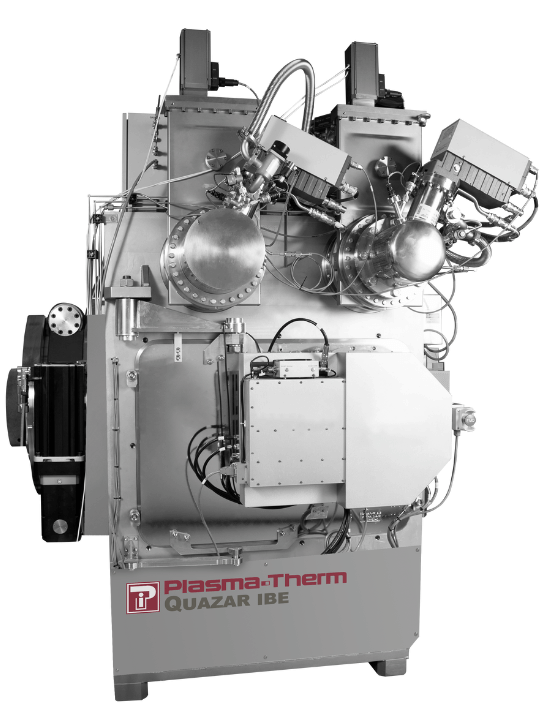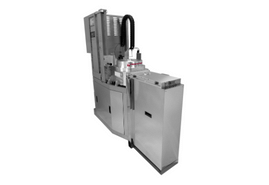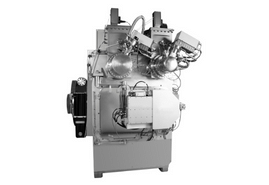When etch rate is less important than exacting profile control, ion beam plasma etch delivers. While the IBE etch rate is typically lower than for reactive ion etching (RIE), IBE offers you high precision (high anisotropism) for applications that demand targeted profile control. You can also use it to remove materials where RIE may not be successful. Moreover, ion beam etching provides directional flexibility that is not available in most etch processes.
IBE has many applications, including nano-machining of magnetic transducers, MEMS devices, and surface acoustic wave (SAW) and bulk acoustic wave (BAW) filter trimming. It can also be used for fabricating high-performance non-volatile memory, specifically “spin transfer torque” magneto-resistive random-access memory (MRAM).
The Beam
The IBE source generates plasma from a noble gas, typically argon. A set of electrically biased grids establish the ion beam energy and angular divergence of ions within the beam.
Beam Control
The ion beam strikes the substrate, removing material by physical sputtering. Endpoint control is available with secondary ion mass spectroscopy (SIMS) to monitor sputtered material species, and stop etching at specific layers.
Angle Control
A tilting and rotating substrate stage makes it possible to altern the ion angle of incidence. This affects sputtering yield and resulting topography.
Improve Profiles
Tilting and rotating the substrate during etching can substantially improve etch profiles and avoid material redeposition.
OUR IBE PRODUCTS
EXPLORE TECHNICAL PAPERS
Want to learn more about this topic? Click here to review technical papers on IBE principles, practices and outcomes.
SEE ALL ETCH PRODUCTS
To review all our etch products, processes, capabilities, and brands, click here.
NEED ASSISTANCE?
Let our experts help you customize our processes solutions for your applications.


